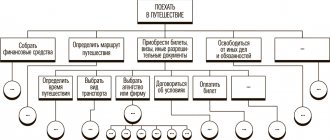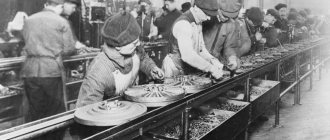Ingvar Kamprad's cousin said that he loved to fish and crayfish, and loved adventure and danger. That's just the way he was. A man who left his mark not only in the world of business, but also in the apartment of every fifth person in the world. A brilliant entrepreneur, innovator, founder of the huge IKEA furniture empire and the biggest miser among the rich, a real Scrooge - Kamprad Ingvar. The media accuse him of Nazi sympathies, tax evasion, and outdated views on business. And the Swedes themselves say that Kamprad has done much more for Sweden than all the politicians combined. What was this man really like?
Family
Ingvar always said that the most important thing in his life is family. They were the ones who influenced his life and supported him when IKEA was just taking its first steps.
Talking about his biography, Ingvar Kamprad often joked that trade is in his blood. His mother came from a family of famous merchants of Elmhult. Ingvar's father was not a good entrepreneur and managed the family farm very poorly.
Ingvar's grandfather was the owner of a store where the boy often spent time and sometimes worked part-time. Thanks to his grandfather, Kamprad became seriously interested in commerce. Subsequently, Ingvar will build an IKEA furniture factory on the site of the store. Unfortunately, my grandfather was not a very successful businessman, and, unable to bear the tax burden that fell on the family, he committed suicide. His grandfather's business was taken over by Ingvar's grandmother, from whom he, in his own words, learned strength of character and inherited the ability to trade.
Kamprad himself was married twice and has four children. He and his first wife adopted a daughter from their first marriage. In his second marriage, Ingvar and his wife had three sons, who have now inherited their father’s company.
Early years and first business
Ingvar was born in 1926 in a parish hospital and became the first-born in the family. The boy spent the early years of his life on a farm near the town of Älmhult. And when he was 7 years old, the family moved to Elmtard, where Ingvar’s father began managing the farm. Things were not going very well; the family managed to make ends meet only thanks to the fact that Ingvar’s mother persuaded her husband to rent out rooms to guests.
Ingvar himself recalls that they all lived in one room at that time; the rest were occupied by guests. This may have led to the fact that until the end of his life he would remain an unpretentious person and a “herd animal” (as Kamprad called himself).
Around the age of five, Ingvar Kamprad begins to become interested in money and ways to earn it. The aunt helps buy the boy one hundred boxes, which the boy will subsequently sell at a fair and make his first profit. A little later, he will start selling postcards, catching fish and selling it to his neighbors. He is driven by the desire to earn money and help his father.
Later he would sell ballpoint pens, which at that time were new to the stationery market. He would do this for quite some time, importing pens from France, he sold them at a significant premium in Sweden, and even once gave a product presentation, during which he promised each guest coffee and a bun. More than a thousand people attended the presentation, and Invar almost went bankrupt.
The history of IKEA: how Ingvar Kamprad built one of the largest retail chains in the world
Furniture is an important part of creating a home, and it may seem strange that at the beginning of the 20th century, even in developed countries, many could not afford to buy it. Good furniture was quite expensive, and it could be purchased mainly by wealthy people, while the rest were content with what they had or made it with their own hands.
Such circumstances faced the young Swedish entrepreneur Ingvar Kamprad, who became interested in the furniture business back in 1948. Most likely, he could not even imagine that this idea would eventually allow him to create a world-famous brand with a turnover of more than $30 billion.
Ingvar Kamprad was born in 1926 and spent his childhood on his parents' farm. Already in early childhood, the boy was famous for his entrepreneurial abilities. At the age of five, Ingvar began selling matches to his neighbors, having learned that they could be purchased much cheaper in Stockholm. The boy's aunt helped him buy the first batch of goods. Ingvar would later say that the moment when he sold his first batch of matches became his best childhood memory.
It will soon become clear that this was just a small warm-up before his further endeavors. Kamprad's biographers say that the ability to trade was passed on to him from relatives on his father's side. Ingvar’s grandfather had his own small business, but in the end he almost went bankrupt and committed suicide. The family business had to be restored by his grandmother, who significantly influenced Ingvar’s development and even taught him several business lessons.
The unusually enterprising boy grew up, and his goals became increasingly different from the interests of his peers. During his school years, Kamprad spent most of his time looking for new ways to earn money and did not spend the money he received on toys and sweets at all - instead, he saved it. When the family asked the boy why he needed so much money, he answered: “To expand the business.” As a child, Ingvar tried himself in various fields, from selling matches to fishing.
By the age of 17, Kamprad had saved up a good amount of money, after which he borrowed money from his father and opened his own company. IKEA is an acronym made up of the first letters of the entrepreneur's first and last name and the names of the farm and village where he grew up. It was 1943, war was raging all over the world, which, fortunately, hardly affected Sweden. First, Ingvar established trade in basic necessities. The first model of work was the mailing of goods. The young entrepreneur was forced to combine work and study at the Getterberg commercial school, where, as he himself says, he learned a lot.
Writing materials began to be in particular demand at that time. To increase profits, the young man takes a risky step: he takes out 500 crowns on credit and orders ballpoint pens from France for them.
When the goods finally arrived, the entrepreneur realized that he needed to sell them quickly in order to pay off his debt. The task was not easy, but Kamprad still found a way to attract buyers to his presentation. He gave a note to the newspaper in which he promised to treat every visitor to a cup of coffee and a bun. Inspired by the proposal, people literally broke into his presentation. More than a thousand guests gathered, and it was a disaster. The young entrepreneur understood that he had to treat everyone, otherwise his name would suffer. With great difficulty and considerable expense, he still managed to do it.
The presentation of the pens was a great success, and the product was sold out very quickly. Ingvar first paid off the loan and never took it out again. He began to think about the importance of advertising in attracting customers - in the future it would become one of the main factors in turning his company into an empire. Another consequence of this promotion was the mandatory presence of a restaurant in every IKEA brand store.
In 1945, after graduating from commercial school, the young entrepreneur was sent to work as a clerk at the Forest Owners Association. Ingvar did not waste time here either: he obtained from one of the managers the right to sell saws. The business model did not change; the young man was forced to independently deliver the goods for sale. Invaluable assistance was provided to him by his relatives, who supported all of Ingvar’s endeavors.
A year later, Kamprad was drafted into the army. An active and very efficient young man quickly won the trust of the unit commander and received permission to take night leaves more often. This allowed him to rent a small office and continue to run his own business.
In 1948, Kamprad began to think about expanding his business. It dawned on him: furniture is something that everyone uses one way or another. The problem is that it was quite expensive then, and in order to make money, it was necessary to make this product publicly available. According to Ingvar himself, the last argument in favor of working in this direction was that his competitors were also trying to do this. In the same year, IKEA expanded: the head of the company, who is also the only employee, despairing of working in so many directions on his own, finally hired the first employee. By 1950, the company already employed four people.
Kamprad spent all his time trying to find cheap furniture - at first it was a variety of small productions that could not command a high price. Its competitors also tried to reduce costs, but could not offer the same prices as IKEA. Over time, Ingvar's approach changed, and instead of reselling furniture, he began to buy individual parts and assemble them in his own small factory, which further reduced prices. Then Kamprad’s famous formula appeared - it is better to sell 600 chairs inexpensively than 60 for a lot of money.
Soon a wave of discontent arose, signaling the beginning of serious competition. First, the company's products were no longer allowed at furniture fairs, where all new products were usually presented. Kamprad had to sneak into these events by cunning, hiding in the back seat of a car. The fight against IKEA reached the point of absurdity: once Ingvar was fined for selling products at an exhibition that took place in his own building.
Kamprad was not going to give up, and his competitors realized that he could not be stopped by such methods. They took the last possible step, threatening the suppliers to boycott the young entrepreneur. But that didn't help either. This was due to Kamprad’s original entrepreneurial approach, as well as the unusual popularity of the company’s products in Sweden.
Such fame became possible thanks to the innovations that Ingvar introduced into business. The first of these was the advertising booklet “News from IKEA,” aimed at people with low incomes, a prototype of modern catalogs that was supposed to attract customers. For the first few years, the booklet advertised not furniture at all, but familiar pens for writing.
In addition, the cheapness of the products sold and Ingvar’s ability to negotiate with suppliers helped out - some of them collaborated with the young entrepreneur, despite all the prohibitions.
In 1958, the first brand store opened in Älmhult under the IKEA banner - although initially it looked more like a showroom than a store in the modern sense of the word. It became widely known not only because of its prices, but also because of its unique approach to customers: in this store you could try out furniture before buying it. If a person wanted to buy a chair, he could sit on it and check its comfort. It’s easy to guess that this attitude towards customers soon bore fruit and people were more willing to come to IKEA than to competitors.
By the end of the decade, problems with furniture manufacturers began to seriously affect business. The remaining suppliers could not provide the growing company with the required volumes. It became clear that we needed to look for other options to increase the number of goods. Then the enterprising Kamprad remembered an old story about pens that he managed to purchase cheaper in France. He decided to buy components from other countries and resell them at a low price. It took some time to find suppliers, but in the end, in 1961, Kamprad found everything he needed in Polish factories. Now competitors could not prevent him from independently determining the cost of goods; moreover, he could put pressure on companies.
Thus, by the end of the 1950s, Ingvar Kamprad, thanks to his entrepreneurial talent, introduced several key rules that still guide the brand today. In general, everyone who knows the founder of IKEA, first of all, notes his ability to immediately grasp the essence of any problem, as well as his skills as a marketer. Some analysts even believe that it was Ingvar who laid the foundations for this direction. In addition, one cannot fail to note his extreme thriftiness, for which some even call him a miser. Ingvar has been dressing in cheap things all his life, and even now, as a dollar billionaire whose assets are estimated by Bloomberg at $51.7 billion, he travels on public transport or in an old Volvo, released in 1993.
Until the end of the 1950s, the company's growth continued, and attitudes towards Kamprad also changed. Previously, many competitors considered him a kind of clueless youth, but now they began to perceive him as a dangerous competitor, capable of finding a way out of any, even the most difficult situation.
In the early 1960s, IKEA already had several stores in Sweden, and Kamprad clearly did not intend to stop there. In 1960, the first restaurant opened in one of the brand's stores in Älmhult, operating as an additional way to attract customers. Ingvar's new goal was integration into the neighboring countries of Northern Europe. Many say that this idea was inspired by a trip to the United States, in which he appreciated the peculiarities of this country and its approach to business. One way or another, in 1963 the first foreign IKEA store opened in Oslo.
In 1965, another important milestone in the company’s development took place - the largest IKEA store at that time near Stockholm opened its doors. It consisted of a three-story extension that served as a warehouse and a circular four-story building. This form was specially chosen by the brand designer because it made it possible to demonstrate the product more effectively. The store soon gained popularity in Sweden, but first Ingvar introduced several changes that would significantly influence the further development of the brand in the future.
Kamprad, as usual, approached the opening very seriously: he chose the ideal location - away from the noisy center, and determined the opening hours - from 11 to 19 hours, when traffic in the capital is calmest and you can easily get to the suburbs. In addition, he finally agreed to the proposal to transport and sell furniture in disassembled form, which simultaneously saved on assembly and launched a new trend in the industry. From that moment on, the brand began selling its furniture this way, offering customers to use special instructions for faster assembly.
However, the opening of the store was not without problems. After the goods were delivered, it turned out that, firstly, the area was too large (30 thousand square meters) and the company simply did not have enough items to sell it completely, and secondly, the goods were sold out too quickly and it was needed constantly give a ride. In order to provide goods to everyone, it was necessary to turn an ordinary store into a warehouse store.
Soon the presence of a large number of products played a cruel joke on the brand. IKEA furniture was very popular in Sweden, so several thousand people visited the stores every day. The brand had problems with cash registers, and huge queues with a small number of sellers led to the fact that goods were simply stolen. We had to increase the number of cash registers and improve their location. In addition, a self-service system was introduced, in which the role of a consultant was given to the client. I must say that this store specialized not only in furniture and other decorative elements. Kamprad expanded the product line in the early 1970s by adding a cookware department.
Among other things, in the restaurant of the new store it was possible to purchase several traditional dishes prepared according to recipes from the city of Småland, where the company originated. By the way, these dishes are still on the menu of the brand’s restaurants.
The opening of a store in Stockholm was an important point in the development of the brand, laying the foundation for further growth. Already in 1965, the company's management could be sure that the right approach had been chosen: turnover reached 70 million crowns. Until the end of the 1960s, the brand opened several more stores in Sweden, and integration into Denmark began.
In the early 1970s, a new goal appeared before Kamprad. The owner of the company, which was valued at approximately 160 million crowns, wondered what the future would hold for his brainchild. The entrepreneur understood perfectly well that a lot rested on him and in the event of his death, the company, built with such difficulty, could simply crumble. By this point, Ingvar was already tired of the endless problems with Swedish tax legislation, which, according to him, was designed rather stupidly. Kamprad decided to move his business to another country, and in 1973, IKEA's headquarters moved to Denmark.
Since the early 1970s, Kamprad, together with experienced lawyers, began to develop a concept that in the future would protect the company from hostile takeovers and excessive taxation. According to Ingvar, the new structure was supposed to provide a kind of immunity against any external threats. For this purpose, the Stiching INGKA Foundation/Stiching IKEA Foundation was created, which owns shares of the INGKA Holding BV holding, which, in turn, includes all IKEA companies. It is the holding's top management that manages IKEA's activities around the world. This part of the company has received the informal name "hand", which means that it owns the main material components of IKEA.
Separated from this part is another important part of the brand - the trademark and concept owned by Inter IKEA Systems. This company monitors the strict implementation of each point of the brand concept and can take away the franchise in case of non-compliance. Brand management is structured in such a way that even Kamprad’s sons, who according to documents can appoint the heads of companies, cannot sell any of them - so IKEA will always remain in the ownership of one family. Such a system was built in 1982.
But let's go back to the 1970s. At this time, Kamprad, who moved his headquarters to Denmark, is increasingly inclined towards active integration into other countries. In 1973, the brand's first store opened in Switzerland. Ingvar doubted for a long time whether it was worth working in this country. The decisive factor for him was the conversation of a young couple overheard in Zurich - standing in front of the window of a furniture store, they decided that they could not afford the purchase now and needed to wait until better times.
Two years later, an IKEA store appeared in Germany. In 1974, the company's turnover was over 600 million crowns, and this was only the beginning of an active phase of international expansion. By the end of the 1970s, the brand had already opened more than 20 stores in different parts of the world, from European countries to Australia.
At this time, the concept of entering the markets of other countries was developed. Typically, IKEA starts by opening a retail outlet in the center of a large city to study the audience, after which it moves on to more active actions and opens hypermarkets outside the city. The largest number of stores appeared in Germany - ten points before 1980. Entering the country's market was accompanied by tremendous excitement. To further increase its influence, the company has opened official representatives in the brand's largest stores in Germany.
At the end of the seventies, Kamprad’s fundamental work “The Commandments of a Furniture Dealer” was published, which laid down the concept of the company’s work. From its release until now, this book is the first thing that any brand employee who wants to build a career at IKEA, from store staff to top management, should study.
By this time, the company had finally gained a foothold in Europe. In 1981, the opening of stores in France began. The brand used the experience gained in Germany, in particular, abandoning the idea of an official dress code. In France, however, people were less surprised that even the brand’s top managers dressed in jeans and sweaters. This idea by Kamprad was supposed to emphasize that all employees of the company, from management to cashiers in stores, are part of one big team.
Simultaneously with its entry into the European market, integration into more distant countries took place: from 1980 to 1984, IKEA brand stores were opened in Saudi Arabia, Kuwait and China.
In 1985, the brand began operating in the USA. Philadelphia was chosen as the location for the first store. Kamprad strongly doubted whether his approach to expansion would be suitable for this country, because the culture in the States at that time was very different from that of Europe. But in the mid-1980s, the spirit of the hippie movement still remained, so the original and democratic IKEA establishments with their informal atmosphere were received with a bang.
In parallel with the expansion, the brand’s product line expanded significantly. Sales of products from the “LAKK” and “Stockholm” series began, in addition, the first “Moment” sofa was manufactured. To create it, the brand's lead designer Nils Gammelgaard had to turn to a company that produced supermarket trolleys to make the final product more durable and sustainable.
In 1986, Ingvar Kamprad announced that he would leave his post at the company and take up a position as a consultant for the Stiching INGKA Foundation. Anders Muberg, who had worked as Kamprad's deputy for a long time, took the place of general director. He continued the course chosen by his predecessor, and by the end of the 1980s the company began operating in two more European countries - Italy and Great Britain.
In the early 1990s, Eastern European markets became a new direction for integration. The first two stores opened in 1990 in Hungary and Poland, and later new hypermarkets appeared in Slovakia and the Czech Republic. At the same time, the company continued to expand into eastern markets, and in the early 1990s, IKEA stores appeared in the UAE.
At the same time, sales volumes began to shift away from Northern European markets. In the 1980s, this direction gave the company 85% of turnover, by the early 1990s - only 27%. Now more than 60% of sales came from Western Europe. The rest of the world provided about 13%. Also, under the new CEO, supply channels have changed. If previously the company received a quarter of all its goods from the markets of Eastern Europe, now the geography has become much wider. In the mid-1990s, the brand used the services of manufacturers from 45 countries.
At the same time, a new problem became obvious - the difficulties in managing such a huge corporation. Restructuring began and a system of distribution centers was introduced in different regions.
In 1994, a scandal broke out. Newspapers published reports that Ingvar Kamprad was a member of the Swedish Nazi organization in his youth. People were shocked to realize who the outstanding businessman and idol of millions of Swedes turned out to be. Kamprad had to publicly explain himself, saying that all his life he considered this his biggest mistake, but the situation remained a crisis.
Ingvar himself says that at that moment he saw who his friends really were: many acquaintances and partners simply stopped communicating with him. To reassure the public, Kamprad made several donations to various international organizations. Over time, the resonance subsided, but even now you can sometimes hear accusations against Ingvar.
The brand's international expansion continued in the mid-1990s. In 1996, IKEA stores opened in Spain and Finland. At the same time, a new brand movement was launched aimed at protecting nature. Back in the early 1990s, IKEA joined the Forest Stewardship Council. In addition, the company presented its own developments aimed at reducing wood costs in the process of manufacturing new furniture. At the moment, IKEA, according to many organizations (including Greenpeace), is one of the most environmentally conscious companies.
In 1997, an important event for the history of IKEA happened - the start of work on the Internet. The company's website presented the conceptual foundations of IKEA's philosophy and information about the company's available products.
At the same time, the line of children's furniture officially launches. Certain types of goods from this category had been on sale for a long time, but now each family had access to a wider range, which, of course, had a good effect on sales. A children's menu has also appeared in the brand's restaurants. Thus, IKEA created the foundation for increasing sales in a category that was previously considered a sideline.
In 1999, after 13 years, the company's management changed again. Anders Dahlvig becomes the new general director - like his predecessor, he was Kamprad’s assistant for a long time. The new head announced a list of changes that he was going to implement. First of all, it was about turning the company into a modern brand. Some moves in this direction were made by Muberg. Now, after the end of the restructuring, Dahlvig announced a new direction - IKEA's social responsibility.
The second important direction of the new leader’s work was a more aggressive expansion into other countries, due to the fact that Asian and American markets provided only 20% of sales, which in 1999 exceeded the €6 billion mark.
In addition, the CEO began to reorganize the management team. Dalvig, who had a good understanding of social processes, immediately noticed a vulnerability that could soon harm the entire brand: despite the growing role of women in business in the late 1990s, only men worked in the company’s top management. Over the next decade, the situation was gradually corrected.
The transformation of the company into a modern brand affected another important aspect - the working conditions at the factories of IKEA suppliers. In the early 1990s, several scandals broke out that damaged the reputation of large companies - they were associated with the use of child labor or insufficient payment of workers. To prevent this from happening again with IKEA, the situation had to be brought under control immediately. For this purpose, IWAY was created - a kind of set of laws regulating working conditions at the enterprises of the company’s suppliers. The Code regulated safety requirements and wage levels, prohibited child labor, and in addition, it stated that the activities of each brand partner must strictly obey the laws of the country to which it belongs.
IKEA did not limit itself to creating a code - to monitor the implementation of the rules, a special department was created, which had the right to submit to the board of directors a refusal to provide services to a supplier if the working conditions at its factories did not comply with IWAY and the violations found were not promptly corrected. It should be noted that the company does not embellish its successes in this field. According to Dahlvig, even in 2009, more than 100 thousand violations were found, and most of them were immediately eliminated.
The company's greatest problems are caused by Chinese manufacturers, from whom it is extremely difficult to achieve a complete abolition of child labor. Moreover, it is from this country that IKEA receives about 20% of its raw materials, which does not allow the company to abruptly abandon manufacturers who violate the law. Now the situation looks like this: Chinese suppliers are trying to hide information about working conditions, and the IKEA commission is trying to establish a constructive dialogue to improve them.
The integration of IKEA into Russia deserves, perhaps, a separate book. The company already had negative experience in this field in the late 1980s. Then Kamprad himself saw the need for this partnership and reached certain agreements with the USSR authorities. It was planned to create on the territory of the country a whole complex for the extraction of raw materials, the creation of furniture and its sale in branded stores, which were to appear in every city. As a result, the idea was a fiasco, and IKEA hastily left this market. The Swedish side is inclined to blame the USSR for everything, complaining about theft and even threats.
In 1997, the company again faced the question of integration into Russia, which Kamprad himself sharply opposed. The company's founder was eventually convinced, but Jan Aulin, who oversaw the expansion, was faced with a serious task. First of all, he collected information about the current situation in the country and reached agreements with local authorities.
Initially, it was planned to build a brand store in the Moscow region in 1999, but due to the crisis, construction was completed a year later. The store opened in Khimki was greeted quite warmly. According to Lennart Dahlgren, director of the Russian branch, more than 30 thousand people visited the store on the first day. Such popularity allowed IKEA management to look into the future with great positivity.
A year later, another store appeared, the opening of which was attended by almost 50 thousand people. At the end of 2001, turnover in the region amounted to more than 2 billion crowns, which led to more active expansion into other Russian cities: by 2008 there were already 11 company stores in Russia. By 2009, sales reached €1 billion. However, Dahlvig speaks negatively about this market, complaining that bureaucracy and corruption are hampering the implementation of IKEA's plans in the region.
The expansion of the brand's geography in the 2000s did not stop at Russia. From 2004 to 2006, the brand began operating in Portugal and Japan. Growth in Europe was planned, since IKEA habitually relied on the European market, which accounted for about 80% of sales. The Asian market was much more complex; the brand’s position there in the early 2000s was not strong enough: there were hypermarkets only in China, and they only brought losses.
It was from this country that the correction of the situation began. To gain a foothold in the Chinese market, it was necessary to use a more flexible strategy built on lowering retail prices, changing the concept of stores that needed to be adapted for more visitors, increasing supply volumes and cheaper products. In the end, this strategy paid off, and by 2009 there were already nine stores in the region.
In Japan, integration was much easier - here the brand used its standard strategy of entering new markets, there were practically no changes in pricing policy. The first store was opened in 2006, and just three years later there were already five.
IKEA's desire for global dominance was reflected in the American market. Dahlvig admitted that although it initially seemed easy to conquer, in reality this turned out to be completely different. The main problem was fierce competition; in addition, the company was let down by its orientation towards the European market. The 14 stores in the United States were making virtually no profit; the product mix was completely unsuitable for the market, resulting in low sales.
To solve this problem, the entire structure of the local unit had to be re-evaluated. As a result of the review, a personnel purge was carried out, the location of some stores was changed, and a sales system was introduced. All this led to an increase in profits and, as a result, in the number of retail outlets - more than 40 stores.
In 2009, Anders Dahlvig left his post. His place was taken by Mikael Olsen, the first CEO who had not previously worked at IKEA.
The following year went down in the history of the brand as one of the most scandalous. First, two top managers of IKEA in Russia were fired due to bribes. The company was further accused of spying on people in France. It turned out that IKEA was in this way trying to obtain information about the past of potential employees, as well as customers who were dissatisfied with the quality of the brand’s products. In addition, it became clear that the pace of expansion into other countries would be slowed down due to the need to introduce a corporate culture.
The new head of the company had to work under constant pressure, which he ultimately could not withstand. In 2013, Olssen was replaced by Peter Agnefjell - the corporation was again headed by a person with experience at IKEA.
The new leader expressed several thoughts regarding the further growth of the brand. First, he abandoned Olssen's planned concept of expanding IKEA by 25 stores per year and decided to concentrate on developing existing outlets. The main goal was to achieve revenue of €50 billion by 2020. In 2013, its size was $28 billion, showing an increase of $3 billion compared to 2012.
In 2014, Agnefjell noted that the brand would gradually increase its capacity in online sales, but this direction would not be key to the company's growth. This year, IKEA's revenue amounted to €28.7 billion. At the same time, profit remained at the same level - €3.3 billion. The growth in brand sales remains a benchmark for many, because IKEA demonstrates an increase in turnover even in times of crisis.
In 2014, it became known that the brand was creating a new subsidiary - IKEA Centres, designed to manage 45 shopping centers in Russia, China and European countries. The main goal of IKEA Centers, in addition to management functions, is to improve work with clients and landlords.
In 2015, it became known that the company was testing a new platform for online sales. Agnefjell promised several innovations, and also noted that Ireland would be the first to appreciate the new approach.
Today, the brand’s online stores operate in 11 countries around the world. The company's revenue in 2015 reached €31.9 billion. During this year, 13 new stores and three distribution centers were opened. Agnefjell emphasized in an interview that the company’s goal remains the same - revenue of €50 billion in 2021.
At the moment, IKEA is one of the largest brands in the world. The company's position on the international market looks almost unshakable. Over its history, IKEA has been able to withstand fierce competition, global crises and high-profile scandals. Brand ideology can serve as an excellent example of how to build a corporate culture.
Without a doubt, its founder played a major role in the development of IKEA. After all, he was able to create a company from scratch that could withstand any changes. The actions of Ingvar Kamprad can serve as an excellent example of how to work to make your dream come true.
How was IKEA created?
In 1943, Invar entered the school of commerce. Kamprad’s very first business idea was the sale of small items: fountain pens, lighters, saws. He imported goods at low cost, then sold them in different cities in Sweden.
The idea of going into furniture making first came to him in the post-war years. According to Ingvar Kamprad, he decided to found IKEA in order to bypass his long-time rival retailers. The young man purchased several pieces of furniture and placed an advertisement for sale in the newspaper. There was only one problem: furniture is a very expensive product. It’s hard to believe that at the beginning of the last century it cost a lot of money and not everyone could afford to buy furniture. Most people made it themselves.
Ingvar set himself an ambitious task: to make furniture a consumer product. To achieve this, the furniture needed to be greatly reduced in price. By 1950, the entrepreneur hires three more employees and transfers to them the day-to-day care of the company. He himself goes in search of cheap furniture.
Ingvar Kamprad begins the history of IKEA with the search for small local manufacturers with the best prices. And he succeeds superbly. Competitors, seeing a threat in Kamprad's pricing policy, also begin to reduce prices for their products, but cannot keep up with him.
Key points that brought IKEA to where it is today
- Starts to develop his own design.
Due to the boycott of competitors, suppliers were afraid to make the same furniture for everyone.
- Uses the idea of “flat packages” - disassembled furniture with instructions so that the buyer can assemble it themselves.
With the start of cooperation with Poland, Ingvar strives to reduce transport costs. In addition, the problem of transporting large pieces of furniture arose.
- Sets up stand rooms in the store.
This way, buyers could get inspiration and understand how to decorate their home. In addition, the stores have employees who know the entire range very well and can help with advice on home furnishings. And the catalog included an insert of “graph paper” on which buyers could roughly arrange the furniture.
- Changes the store colors from white and red to yellow and blue. In the color of the Swedish flag.
- Installs testing machines at the entrance to stores where furniture was tested.
IKEA has secured the status of inexpensive, accessible and reliable furniture. To prove this to customers, such machines were installed.
In 1965, the largest IKEA store, Kungens Kurva, opened in the suburbs of Stockholm. The features of this particular store determined the future style and concept.
- Moves the store outside the city, where there is more parking space and the price of land is lower.
- Opens a warehouse for customers.
In the first days after the opening, all the goods in the store were bought up. Ingvar decides to open a warehouse for buyers so that they can pick up things immediately from there. This is how the concept was born: a store-warehouse.
- Installs a children's playroom at the entrance.
This idea was spotted at a fair in England, but now it’s hard to imagine IKEA without an aquarium with colored plastic balls.
- Opens a full-fledged restaurant in the store.
Invar understood well that business is not done on an empty stomach. Coffee and buns are good, but you also need to refresh yourself between purchases. Delicious and affordable food attracted visitors as well as affordable furniture, and Swedish meatballs with lingonberry sauce became famous throughout the world.
How did the first one appear?
Even the lowest prices do not suit Invar, who is used to saving, he decides to open the first one for assembling furniture and individual components, which allows him to further reduce prices. The idea came to the entrepreneur when he saw how one loader was unscrewing the legs of a table for that purpose. To load it into the car before transport.
At this time, Kamprad invents his famous formula, which says that it is better to sell 600 cheap chairs than 60 expensive ones.
What is the secret of success?
Kamprad's small company grew into a huge corporation. IKEA has conquered the world and is rightfully considered one of the most successful companies in the world. Some will say that you were lucky, it was a good time. But, without a doubt, without Ingvar, without his desire for trade, economy and simplicity, the company would not exist.
Now the IKEA development strategy is being studied in many universities around the world. Each one highlights its own key points. But we will focus on the Commandments of the furniture dealer, which Kamprad left for his employees. They describe the IKEA concept and, in my opinion, their secrets to success:
- To create beautiful and high-quality things at low prices so that as many people as possible can buy them.
- The IKEA spirit is passion, personal responsibility and a desire to help others. Show concern and encourage each other.
- To make people's lives better, we need resources. Especially in the field of finance.
- Achieve good results with limited means. Any designer can design an expensive table, but it is important to be able to create a beautiful and functional table that is affordable.
- IKEA has simplicity in everything, even in its management structure. There are no barriers between employees or complex rules. Kamprad against bureaucracy.
- IKEA is following its own path, looking for new ways to grow and questioning its actions to stay ahead. “Why” is the key word in the company.
- Concentrate your efforts on the main thing and don’t get scattered. You don't need to do everything, everywhere and at once. Concentration is important for success.
- Only the one who sleeps makes no mistakes. You need to allow yourself to make mistakes. Make decisions and take responsibility.
- Don't stop there. Constantly asking what else can we do better tomorrow? Happiness is not in achieving a goal, but in striving for it.
Fighting competition
Low prices allowed IKEA to quickly become one of the leading companies in the country. This, naturally, did not suit the competitors. An unfair struggle for the buyer began. Competitors spread unpleasant rumors about IKEA and its young leader.
Companies are prohibited from participating in exhibitions. Things were reaching the point of absurdity. Once, the founder of IKEA, Ingvar Kamprad, was banned from participating in an exhibition held in a building that belonged to him.
In addition, because the price of the furniture was very low, consumers began to complain about its quality. Products were still sold through advertisements and catalogs, so buyers, when purchasing furniture, could not evaluate its quality. An immediate solution was required. And Ingvar finds him. He organizes his own exhibition of his own furniture at the factory, this solves two problems at once: buyers see the product and there is no dependence on competitors. Things got better, and five years later Ingvar and his company managed to open a full-fledged store on the top floor of the factory.
By the end of the eighties, IKEA warehouse stores had already covered all of Europe, not only Western, but also Eastern. Kamprad even tried to break into the market of the Soviet Union, but failed. He managed to open his first store in Russia only in 2000 in Khimki. Now on the territory of Russia there is also.
Another innovative approach was the opportunity to try out furniture. Anyone could sit on a chair and see how comfortable it was or lie on an IKEA bed. This is still allowed to visitors in the company's trade pavilions.
The cheapest furniture in Sweden
My first experience with furniture was an advertisement for a chair from a neighboring workshop, which Ingvar called “Rug”. He had difficulty remembering SKUs and numbers due to his dyslexia, so he made up names for each product. This later became one of the most interesting features of IKEA.
The result of the advertising was impressive: the chairs were sold in huge quantities. The entrepreneur began to work in this direction. Kamprad added more furniture, put together a product brochure, and hired his first employee because the family could no longer pack and ship the goods themselves. The number of orders grew, and with it the competition. In this struggle for buyers, prices fell, and with them quality.
Kamprad found a way out. In order not to lose profit and maintain the quality of goods, he decided:
- reduce the cost of goods by starting to work without intermediaries;
- open an exhibition of furniture so that people can see and touch it for themselves and see its quality;
- buy a small factory where he started his own production.
IKEA's success was so overwhelming that it put other companies at risk. Competitors ensured that loggers boycotted him. But Ingvar inherited his grandmother’s persistence and did not give up. When the local market closed, the whole world opened up. Kamprad found an inexpensive supplier in Poland, where, moreover, labor costs were lower.
Kamprad wanted people with the lowest income to be able to buy beautiful, elegant furniture. This idea turned into Ikea's mission.
State
The IKEA business is very private and family-run. The company has no shares and virtually all asset sales occur internally. The company conducted its first brand assessment in 2012 in order to sell one of the companies owned by Ingvar to the group. In 2015, the company's net profit was more than $30 billion; by 2021, this amount increased and reached $36 billion.
The exact value of the IKEA brand remains unknown at the moment. The fortune of its founder Ingvar Kamprad is also a mystery. But shortly before Ingvar’s death, information began to appear in the media that in 91 years, Kamprad had managed to accumulate more than 52 billion dollars and become the richest person on the planet (according to Bloomberg). Forbes magazine was more modest in its estimates and estimated Kamprad's fortune at just over 3 billion, and the total fortune of the family was equal to 3.5 billion.
What will happen to IKEA now?
Ingvar Kamprad is a visionary man. Back in 2012, he realized that he could not manage the company on his own and he was ready to transfer everything into the hands of his sons. By the way, all this time he carefully prepared them for this role and did not show them anywhere. In 2012, the helm of the company was taken over by the three sons of Ingvar Kamprad, who by that time were in their fifties. At that time, everyone was wondering which path IKEA would take—remaining a family business or going public. Six years have passed and some conclusions can be drawn - the company remains a family business, but some changes have nevertheless occurred. In 2017, IKEA experienced some upheaval: Inter IKEA was strengthened and now not only owns the IKEA brand and concept, but is also responsible for development, production and supply chain. The IKEA company will move from the image of a home-based, “lamp” supermarket with furniture to the same “lamp” online store. The online market has already brought down more than one retail chain and sent it to the bankrupt list.
IKEA understands this, so they are now actively working to move their business online. For example, in some countries they began to open points for dispensing goods in the city center: now you don’t need to walk around the hypermarket for a long time in search of the right chair. Now you can simply choose on the Internet and pick up a chair at the pick-up point on the way home - it’s simple. The guys are constantly trying to expand their online range of products. Currently there are more than 9,000 products, and there will be even more in the near future. What do you and I know about IKEA? This furniture, after you have bought it, needs to be assembled. Ingvar Kamprad came up with this in order to reduce the cost of production, and also in order to strengthen your connection with the product, because you will assemble it yourself, therefore, put a part of yourself into it. This, of course, is great, but not everyone wants to assemble furniture - that’s a fact. Therefore, very soon, IKEA furniture buyers will have a choice: assemble the furniture themselves or call furniture assembly specialists. It’s not for nothing that at the end of 2017, IKEA bought the promising startup TaskRabbit, which allows you to find furniture assembly specialists. Another step towards flexible digital sales. What conclusions can be drawn from all this? The company was preparing for Ingvar Kamprad to leave this world. Now IKEA is in the hands of the Kamprad family, it is actively developing and trying to gain a foothold in the online market. Will she succeed? It's hard to say: time will tell.
Stingy?
Invar Kamprad was most often accused of pro-Nazi views and incredible stinginess. Was Kamprad really like this?
Ingvar preferred to use cheap furniture from IKEA at home or used old furniture, which was often over 20 years old. So, one day, he mentioned that he preferred to sit on an old chair that he purchased 30 years ago. Ingvar has been driving an old Volvo car for more than 20 years, tries to fly economy class when possible, and wears clothes purchased at a flea market or second-hand store. He is accused of tax evasion in Sweden. Ingvar moved to Switzerland only to reduce his tax burden. And among businessmen there is a well-known story when Kamprad was not allowed into the presentation of prestigious awards for entrepreneurs only because the security guard did not believe that the billionaire could ride a bus. Ingvar Kamprad often used public transport. Ingvar's neighbors said that he never donated money to the poor.
In fact, Invar, in addition to the old Volvo, also owned a Porsche, he had a villa in Switzerland and a small vineyard. If he needed to quickly get to a meeting, he could fly on a charter flight.
When IKEA CEO Ingvar Kamprad was asked in an interview whether he considered himself a cheapskate, he replied that he considered himself a cheapskate and was proud of it. He later explained that he achieved such incredible results thanks to an extremely modest lifestyle. By doing so, he tried to set a good example for his children and employees. The truth is that Ingvar spent a lot of money on developing the company.
Despite Ingvar's stinginess, the IKEA Charitable Foundation continues to donate tens of millions of dollars annually to combat child labor, protect children's rights and solve problems of homelessness. It is known that the foundation co-authored the UNICEF document “Save the Children”.
Going international
After success at home, IKEA began to rapidly spread throughout the world. This was also facilitated by Ingvar's trip to Switzerland. There, in one of the stores, he heard an argument between a married couple. The wife wanted to buy a chair, but the husband replied that it was too expensive for them. Kamprad took this conversation as a sign.
In 1973, the first store outside Scandinavia opens: in Switzerland. IKEA then goes to Germany, Austria and the UK. In the 1980s The first store opens in Philadelphia, USA. At this time, the hippie spirit was still in the air in America, so the informal and democratic store immediately became popular.
At the same time, in the 1980s, IKEA moved to the East. In 1988, the first store opened in Shanghai, China.
A forest lease agreement was concluded with the USSR for 99 years. It was planned to open production and provide the company with logging for a long time, and then open branded stores. But, according to Ingvar, the Russian mafia and the Soviet bureaucracy intervened in the matter. For example, important parts were stolen, without which the sawmill could not operate. IKEA lost about 60 million Swedish kronor and was forced to abandon the project. For a long time, Kamprad did not want to return to Russia. It was a serious failure that he suffered. But later Ingvar was finally convinced. In 2000, a store opened in Khimki near Moscow, which was visited by more than 37 thousand people on the first day.
As of August 2021, IKEA has a total of 422 stores in 50 countries. 14 stores are located in Russia. And plans to grow further.
Fascist?
Kamprad has been accused more than once of being Nazi sympathizers. In one of his books, Ingvar Kamprad said that his grandmother was a fan of Hitler and tried to instill in him a love for Nazi Germany.
In 1994, letters from one of the Swedish pro-Nazis were published. They mentioned that Kamprad was an activist of the New Swedish Movement group, which expressed racist views. A real scandal broke out! Workers and consumers demanded an explanation. After this, Kamprad published a letter entitled "My Biggest Fiasco", in which he regretted his participation in the Nazi organization. In addition, it is worth mentioning that one of Ingvar’s best friends was refugee Otto Ullman, a Jew by nationality. Subsequently, Otto will help Ingvar open his first business and greatly influence his vision of finance.
Books
Despite the fact that Ingvar suffered from dispersion all his life and could not read, he managed to participate in the creation of several books.
In 2002, the famous book created by Ingvar Kamprad “I have an idea!” was published. About the history of IKEA, co-authored with Bertil Thorekul. An honest revelation, a guide for young businessmen. In it, the already middle-aged 82-year-old Ingvar spoke about his childhood, how he came up with the idea of a furniture store “for everyone” and charitable activities.
Thorekul Bertil's book “IKEA Sagas” was written as a result of numerous interviews given by Ingvar. He never spared time for his biographer.
Ingvar’s best work is considered to be the book “The Testament of a Furniture Dealer,” in which he outlined all the basic principles of his company’s work, talked about how to increase sales and corporate governance.
Store transformations
The opening of the first furniture exhibition in 1953, which Ingvar held in a small renovated building, gave a great impetus to the development of IKEA. He realized what people were missing: a catalog to attract buyers, and a large room where simple interiors and all the products would be presented. Customers will be able to evaluate each item independently and order it here. In addition, Kamprad promised everyone who came to the opening coffee and buns. It was the first mail-order exhibition in the world to operate in this way. The success was amazing.
Kamprad's business developed. The number of customers grew, the catalog became thicker, the photographs became more professional, and the IKEA “family” grew. 5 years later, in 1958, he opened a full-fledged store in Älmhult.
From the opening of the first exhibition to the present day, IKEA has undergone many changes, but Kamprad perceived every obstacle that stood in the way as a new opportunity. “The only important thing is to see her,” said Ingvar.











